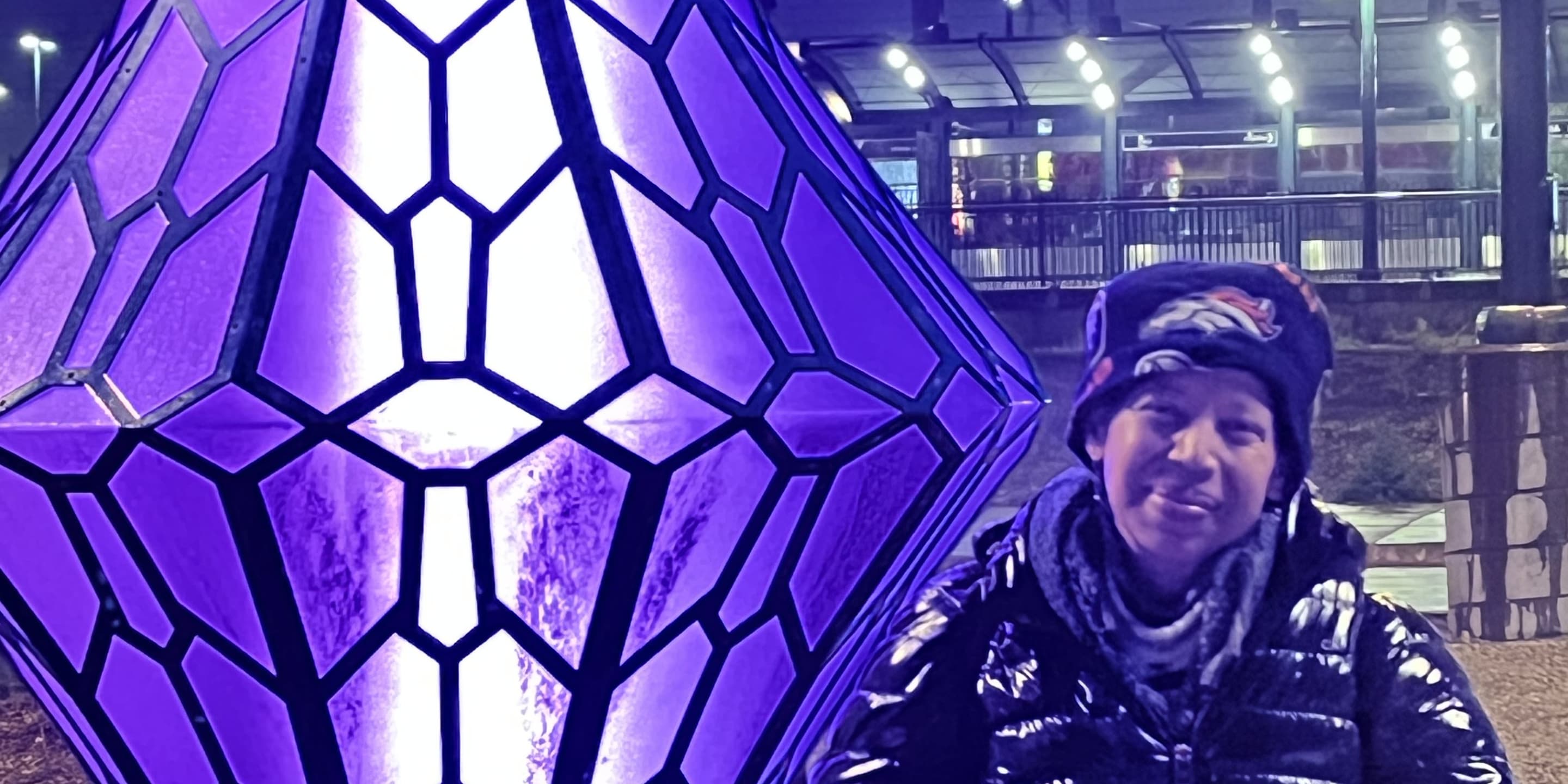
“Transit is community”: How one customer shows the everyday advantages of choosing RTD
For longtime customer and freelance writer Natasha Mitchell, RTD isn’t just a method of transportation, but the most reliable and community-focused way to get around the city, led by operators she deeply admires. After more than two decades on board, she has seen moments of compassion and care that have made her a daily rider and one of RTD’s most heartfelt champions. Her story reflects what many Denverites discover once they commit to riding: RTD makes life easier, more affordable, and more connected.
A Denver native, Mitchell grew up in Park Hill watching the transit system expand around her. “I remember the buses from when I was a kid, and I was always excited to ride the mall shuttle downtown,” she said. She recalled watching the light rail being built and later riding the E Line out to RidgeGate, a place she and her family jokingly called ‘Coyote Junction’ as the area was nothing but open fields. Over the years, she’s watched entire neighborhoods, job centers, and commercial districts grow around train stations and major bus corridors. “It’s wild seeing all of this life pop up where it used to be all fields. It’s just really wonderful,” Mitchell said. To her, that is proof of RTD’s long-term value: transit doesn‘t just follow growth, it drives it.
Her riding history spans nearly every corner of the system. When she worked on call for the Denver Public Library, she rode almost every type of service RTD offers. Today her regular routes include the E, R, 65, 153, 169, 121, and FlexRide. Mitchell greatly prefers taking transit to driving. “Why deal with parking when the bus or train gets you there easily? The convenience and safety just make sense.”
Mitchell said RTD has been a lifeline for her over the years. In her hardest moments, transit didn't just help her get around — it grounded her. She has formed long-lasting relationships with bus and light rail operators. Some know her family members by name. Others greet her like an old friend. “They have become lifelong friends to me and my family,” she said. “If I’m riding alone, they always check in. That means something.” She has also seen operators on their breaks let customers remain on boardto shield them from the weather, something she considers a “true act of compassion” on a brutallycold day. These connections showed her something manydon’t realize: RTD is full of people who care.
Her admiration for operators runs deep, and she has written many commendation letters over the years to make sure their work is recognized. “People don’t realize how skilled they are,” Mitchell said. Sitting near the front, something she considers both a personal choice tied to her passion for civil rights history and “wanting to sit where I want to sit,” she has seen operators manage unpredictable motorists and pedestrians, and constructionwith calm expertise and skillful precision. “I’ve never seen a close call caused by a bus operator,” she said. “But I’ve seen plenty they’ve prevented. They are highly trained and make sure everyone is safe.”
Mitchell credited RTD’s evolving infrastructure as another major advantage for customers. She’s seen routes expand to bring better connections, and once-isolated stops grow into busy hubs. “There were places where you used to have to walk forever after the train,” she remembered, “and now there are buses waiting for you.”
Experiences in other cities have also shaped her appreciation for Denver’s system. “I went to college in Los Angeles, and their system wasn’t much of a system, it felt scattered and car-focused,” she reflected.On the other hand, her travels to Boston and her use of its well-developed network reminded her of RTD and how effective a connected transit system can be. “RTD really strikes a balance,it’s reliable, it’s connected, and the people running it care.There’s that community that many cities are struggling to achieve.”
She has also noticed RTD’s efforts to create safer, cleaner environments. “Things have improved a lot,” she said. She praises custodial teams as the system’s “unsung heroes” and appreciates infrastructure changes designed to reduce misuse of enclosed spaces. “Things like clean stations and the growth of the Transit PoliceDepartment really help to create a cleaner, more secure customer experience.”
For Mitchell, these experiences add up to a simple truth: RTD makes Denver more livable. It reduces the financial burden of car ownership, reduces traffic, supports environmental goals, and connects people in ways private vehicles never can. “Why spend your money on Uber or Lyft,” she asked, “when RTD can take you almost anywhere for a fraction of the cost?” Riding transit also builds awareness, as she checks the RTD Next Ride app to find out about alerts, outages, and repairs. Those habits make her feel more connected not just to the system, but to her city.
The most important message she wants others to know is thattransit is for everyone.More importantly, she believedtransit builds community in a way cars are unable to. “Transit isn’t just transportation,” she said. “It’s community. People recognize you. Operators look out for you. You meet people you never would otherwise.”
“Give RTD a chance,” Mitchell said. “You’ll be surprised by how far it can take you and who you’ll meet along the way.When more people ride, the whole city becomes united.”